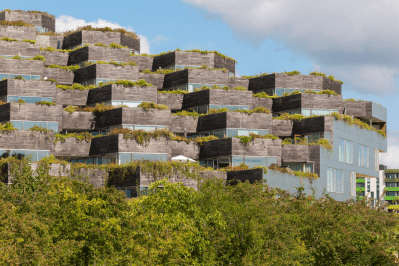There’s a well-known designer from Denmark streamlining abstract architecture into mainstream culture. Headlining major builds across the globe, he illustrates intention and ingenuity on wonderful scales. From the Google’s Bayshore Campus to the Two World Trade Center in New York, Bjarke Ingles and his team are on a global architecture tour without a ceiling in sight.
Actively promoting sustainable concepts that are leveraged with lower build costs – BIG (Bjarke Ingles Group) has embarked on a journey of favorable futures for our plentiful, yet very populated planet. I recently caught wind of his work via the Netflix series Abstract, which details the lives and work of carefully chosen designers coming from diverse disciplines and backgrounds.
Ingels demonstrates that the future of design can be a collaboration between nature and man. Like ancient Taoist artists and philosophers of China, Ingels wants to weave humanity into natural landscapes, rather than redefine them. His designs often end up being incredibly pragmatic, like The Mountain residential complex in Copenhagen, where mathematics frees the design from the chains of tradition and unleashes a world of new potential that could apply to new living spaces worldwide.
The Mountain takes a traditional living complex and parking structure and fuses them into one like some kind of off axis rubix cube. Like the underside of bleachers in a stadium, the parking structure props up a series of 80 apartments that feature cascading rooftop gardens across them. Supported by its own watering infrastructure, these gardens are filled with seasonal and regional plant life that elegantly enhances the cooling system of the building, while sequestering CO2 and providing fresh herbs and veggies to the tenants.
When I look at The Mountain, I’m forced to confront what feels like largely senseless design that is happening all around my home city of Denver, Colorado. If we are going to wipe out the majority of affordable single-family homes and build community-centered complexes, we might as well try our best to honor the amazing view that is the Rocky Mountains by doing our best to not outshine them. Furthermore, we can do this while simultaneously providing a better living experience for the people who now have few other choices. Focusing on effectively using space while lowering costs of materials and labor gives developers an opportunity to consider how to incorporate custom integration into these units as well, which given the bright future of smart homes and IoT, seems like the only true way to go.
Designers like Ingels give me hope by finding ways to transmute the concerns I have for the future into workable models for progress. His vision and special touch have helped him transcend virtually all boundaries as an artist and become one of a unique class of world-class architects with a globally inspired, ecologically informed vision. Through faith in the scientific as well as the abstract, Ingels invokes new ideas and creative possibilities. I hope his simple, yet profound approach finds its way into designers of all industries in the days to come.
This piece was first posted at Technology Insider Group





